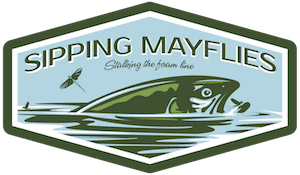HOW TO HIRE A FLY FISHING GUIDE
November 22nd, 2024
Hiring a fly fishing guide can be intimidating if you don’t know what to expect. Fortunately, I hire guides relatively often and I’ll put you as ease by explaining every facet of the process, the dos and don’ts, expected costs, when and how much to tip, and how to conduct yourself.
What’s the purpose of a fly fishing guide?
It’s important to remember that you’re hiring a guide to help you catch fish and have a memorable time. Don’t go into the day thinking you’re taking up his or her valuable time—this is how they earn a living. It’s a service-based job, just like a personal trainer, a salesman, or a landscaper. You’re hiring them, not the other way around.
Fly fishing guides can’t guarantee you’re going to catch fish. Not only is your ability to bring fish to the net dependent upon your skill level, but also other factors such as weather and seasonality.
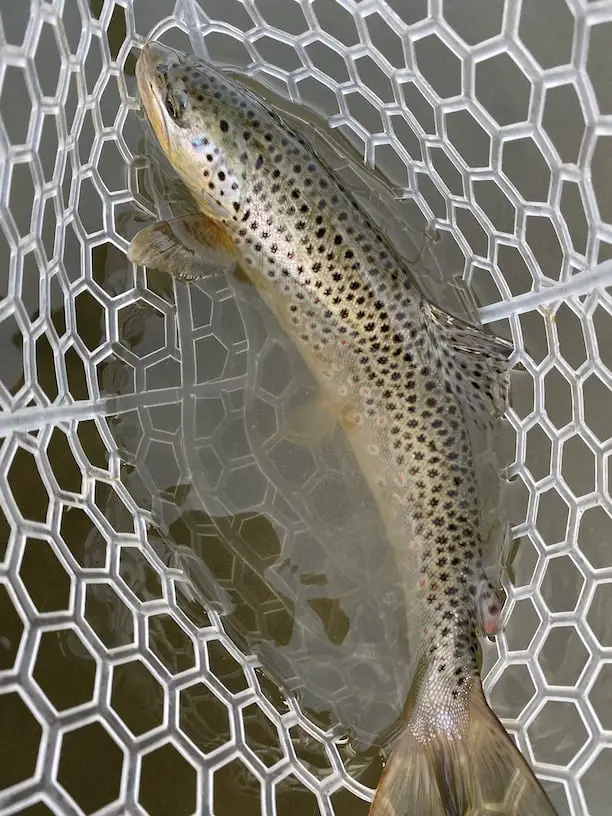
With that said, no guide is going to operate on a river that’s not productive. In fact, they’re only found on productive rivers. They want to set you (and therefore themselves) up for success. So, don’t worry as much about the specific river you’ll visit.
Your guide will likely teach you tricks you’d have never learned elsewhere.
One of my guides taught me a great method for storing my fly line outside the guides while walking to new spots, and another taught me to wipe the end of each rod section on my nose to lubricate it before inserting it into its adjoining section.
Another guide taught me a super-fast way to tie improved clinch knots. I’d been tying this knot for decades but had never seen his method.
Most fly fishing guide services have been in business for many years, sometimes decades. This is important because it means they know where the best spots are, the best times to fish, and the best flies. Every river is different, and this is a major reason why hiring a guide is a valuable service if you’re not familiar with the water you’ll be fishing.
Hire a fly fishing guide if you:
- Don’t have several days to figure out a river
- Are on vacation or traveling for work and your fishing time is limited
- Just moved to a new area and want to learn how to fish the local water
- Are a beginner
Do’s and Don’ts when You Hire a Fly Fishing Guide
DO LET THE GUIDE KNOW YOUR GOALS. I’ll say it one more time: the guide is working for you. I of course don’t mean that you should act like a dictator—not at all. But do let him or her know that you’d like to chase trout on dry flies, for example. If you’d like to use an indicator all day, let them know. If you’re into streamers, tell them.
Your guide will cater the day around your wishes. For example, if the fish haven’t been hitting dry flies, the guide will let you know and give you the option of trying something else or sticking with dries. Again, it’s up to you—it’s your trip.
Back when I was a beginner, I told my guide that I wanted to use dry flies exclusively. I said I didn’t want “to stare at a bobber.” In other words, I didn’t want to use an indicator—that was my personal preference.
My guide was so pleased. He said almost everyone used an indicator and it was going to be fun for him to watch dry flies instead. It was a nice change for him. If I hadn’t said anything, he probably would’ve rigged-up an indicator for me, assuming that’s what I’d want to do.
If you want to avoid crowded waters, let the guide know. Guides often have access to several entirely different bodies of water. Some rivers and streams are good for dry flies, some sections are great for indicator fishing, other sections are less crowded, some sections offer more action but smaller fish. Everything is a trade-off.
I once told a guide I only wanted to use dry flies, and so he chose a tailwater river that wasn’t suffering from snowmelt runoff (which clouds the water). The green drakes were hatching all afternoon and it ended up being a great day.
If you want the boat to yourself, which is the only way I roll, let the guide service know.
Here I am with a big feisty rainbow trout on a guided trip.
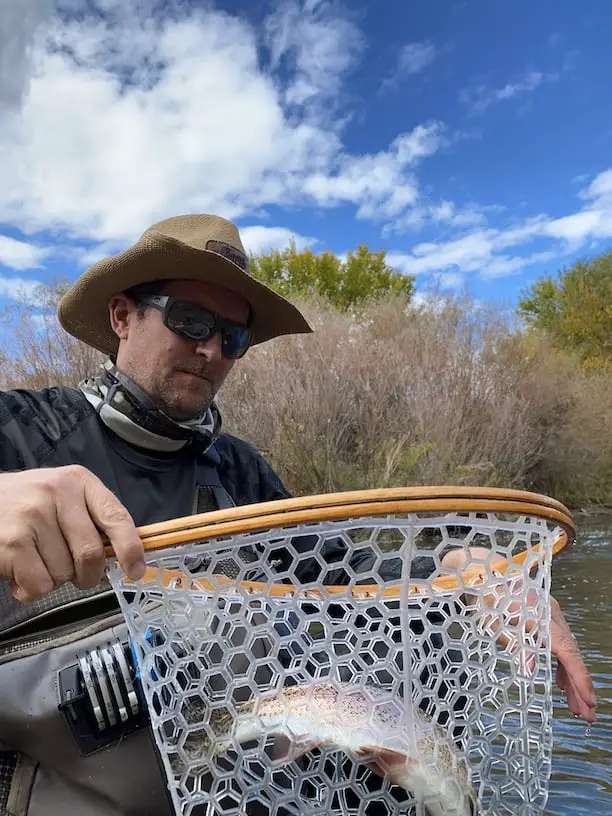
DO LET THE FLY FISHING GUIDE SERVICE KNOW IF YOU PREFER A FEMALE GUIDE. If you’re a woman and would be more comfortable with a female guide, ask for one! Women are becoming more and more common in the fly fishing industry.
DO BRING A RAIN JACKET IF RAIN IS EVEN SLIGHTLY POSSIBLE. Guides often have spare rain gear but if there’s even a chance of rain, bring a rain jacket.
DO STAND IN THE FRONT OF THE DRIFT BOAT. If you’re the only fly fisher on the trip, always stand in the front of the boat—it’s the best spot to cast from. If you’re with a friend, try rotating so one person doesn’t get “stuck” in the back of the boat all day. The person in the front gets first crack at all the fish.
DO OFFER TO HELP THE GUIDE GET THE DRIFT BOAT INTO (AND OUT OF) THE WATER. The first time I hired a guide I offered to help him pull the boat off the trailer and into the water. He demurred but thanked me for the kind offer. He said no one had ever offered to help him with the boat before. That surprised me.
So, if you’re physically able, offer to help your guide get the boat into (and out of) the water. They might not take you up on the offer, but they’ll sure appreciate it. It’ll set a good tone for the trip.
DO LET YOUR GUIDE KNOW YOUR FLY FISHING CAPABILITIES. Guides are used to working with beginners, so don’t be embarrassed. If you’re new to fly fishing, the guide will figure it out in about a minute on the water, so prepare them ahead of time.
As I said, they’ll try to cater the day around your wishes and abilities. If you’re a beginner, they’ll avoid areas where the fishing is technical and will focus on more forgiving spots with higher success rates. Using an indicator is often suggested for those new to the fly fishing.
DO LET THE FLY GUIDING SERVICE KNOW IF YOU WANT TO WADE OR USE A DRIFT BOAT. Guide services usually offer walk-and-wade outings (no boat), or drift boat outings. Drift boat outings are far more popular, but if getting off the beaten path and wading up a tributary sounds fun, let them know.
DO ASK THE GUIDE FOR CASTING ADVICE. Guides are usually good fly anglers, and thus good casters. I used to say something like, “If you see any obvious casting improvements I could make, just let me know, I’d appreciate it.”
They’re guides, and not necessarily casting instructors, but some of them can give you good advice.
DO BRING CASH. If you use American Express, be ready to be told they don’t accept it. Also, if you’re going to tip (more on this later), cash is best.
DO ASK FOR AN ESTABLISHED GUIDE. I know, everyone needs to start somewhere. But, not when you only get a set number of guided days a year. Sorry, I want to hire a fly fishing guide who’s got some experience, not the new guy.
DO ASK HOW LONG YOU’LL BE ON THE WATER WITH A “HALF” DAY VERSUS A “FULL” DAY. More on this later, but the hours can very hugely between guide services.
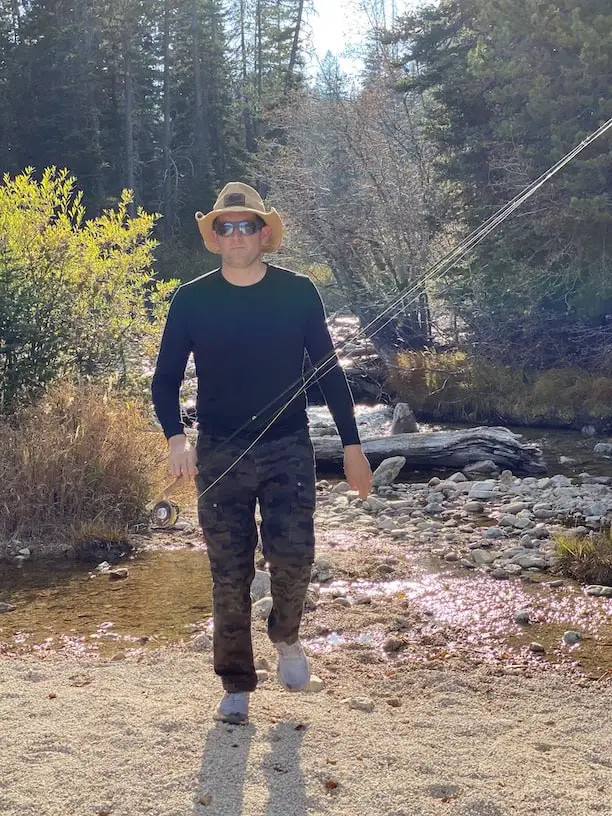
DO WATCH THE WEATHER. I’m not necessarily proud of it, but I once switched the date of my guided fly fishing reservation three times in one week. There was a thunderstorm in the forecast, and I was trying to avoid it.
To their credit, they kept moving the date for me without much pushback. They did try to convince me that the best fishing can be on rainy days (which is true, by the way), but this was a bona fide thunderstorm, and we were on vacation. If lightning is visible, I don’t hold a long graphite fly rod in my hand in the middle of a river. That’s one of my little rules.
Fly shops don’t give refunds for rainy days, by the way. Now, if you literally can’t go out onto the water, you don’t have to pay. But if you’re just disappointed because it’s cold and drizzly out, sorry, no refund for you. This might seem harsh, but would a beach hotel refund your stay because it rained the entire time you were there?
DO ASK IF YOU’RE SUPPOSED TO BRING YOUR OWN LUNCH. Many fly fishing guides provide lunch, but some guides don’t. Ask the guide service ahead of time to avoid an embarrassing (and frustrating) situation.
Some guides bring their own lunch, but nothing for you. Some guides stop and make a shore lunch for you, and they make themselves scarce while you eat. Always ask.
DO ASK IF FLY FISHING GEAR IS PROVIDED. Most guide services include equipment usage (rods, reels, etc) in their quote for a half or full day, but if you’re not bringing your own gear, make sure to ask.
DON’T ACT LIKE YOU’RE ROYALTY. While it’s true that this is your day, don’t ever talk down to your guide or try to boss him or her around. That should go without saying.
You’re paying for the trip, but that doesn’t give you the right to be rude or overly demanding. You’ll get much more out of your guide by being polite and respectful. You can take that to the bank.
Guides don’t treat everyone the same. No, they’ll feed off your vibe.
If you’re a jerk, they’re not going to go the extra mile for you. If you’re pleasant, they’ll make the extra effort to help make it a great day. They might stay later if the fish are biting or take you to spots they otherwise wouldn’t.
Here’s a funny example of what I mean.
I once had a guide on the Henry’s Fork and he told me a story of a husband and wife couple he took out fly fishing.
The husband was apparently a real condescending jerk to his wife and was short with the guide.
The guide was on the oars in the middle of the drift boat, with the wife in the back, and the husband up front.
A couple hours into the trip the guide saw a giant horsefly land on the husband’s calf. He thought about saying something or swatting it away, but he didn’t.
A few seconds later the husband shrieked in pain as the horsefly slit his skin open.
The guide leaned back to the guy’s wife, smiled, and asked how she was doing. With a big smile on her face, she said she was doing just fine.
It pays to be nice to your guide.
DON’T EXPECT THE GUIDE TO DO EVERYTHING.
Your guide isn’t your servant. It’s not the guide’s responsibility to tie your knots, swap-out your flies, and wipe your butt. You’re an adult and should be somewhat self-reliant when it comes to your gear.
If you honestly need help with your knots, just ask your guide politely and he or she will always help you out, guaranteed. They can tie knots blindfolded.
DON’T HUFF AND PUFF IF YOU’RE ASKED TO BUY FLIES. It can be frustrating; I’m not going to lie. Sometimes, while paying for your outing, you’ll be charged a set amount for recommended flies.
I was once charged $36 for flies I didn’t even want. The guy at the counter said it was mandatory. And it wasn’t included in the day’s fees, it was extra.
On the water, my guide went through my existing fly boxes, and we never even used the flies I was forced to purchase. It’s just one of those things—don’t let it ruin your day.
DON’T HIRE A FLY FISHING GUIDE JUST TO FIND A HOTSPOT. This is a big no-no. Some folks, usually ignorant vacationers, think they can hire a guide for a half-day, then simply go back to those same spots on their own over the next few days.
Don’t do it.
Guides are often full-time. Guiding is their livelihood. One guide told me he’d worked every day for five months. They spend years finding the best spots, the best flies, and the best methods. They won’t take kindly to your exploiting them because you’re cheap.
And don’t ever try this in Florida.
NLINE REVIEWS
I don’t trust online reviews—call it a healthy skepticism. And it’s been said that skepticism is the chastidy of truth. Angry customers can’t wait to post negative reviews, while satisfied customers generally don’t even think about it. I think there’s a natural bias because of this tendency. Fake reviews are prolific.
You might be able to find some reviews of specific fly fishing guides, but take them with a grain of salt.
I’d recommend calling the fly shop and having a conversation with them about what you’re looking for in an outing—this has always worked well for me. If you’re a beginner, let the shop know and specifically request someone who’s patient or good with people who are just starting out.
If you’re a fan of Orvis (some people aren’t), they have a certification program and have lists of guides who they endorse. It’s a relatively rigorous approval process.
how much does it cost to hire a fly fishing guide?
Fly fishing guides are generally booked for either a half-day or a full-day.
Very generally speaking, a half-day is +/-4 hours, and a full day is +/-8 hours.
But here’s the thing. Some guide services consider a “full day” to be 8-10 hours on the water. Others consider a “full day” to be +/-6 hours including travel time to and from the river.
Always ask how much time you’ll spend on the water with a half or full day booking.
I once booked a full day on a western river, which was eight hours according to their schedule. What I didn’t realize (and they didn’t tell me) is that we’d be driving a full hour to-and-from the river. So, taking this into consideration (and time spent landing the boat), my eight hour trip was really closer to 5 ½ hours on the water.
Here’s one of many brown trout (Salmo trutta) I brought to the net on my last trip.
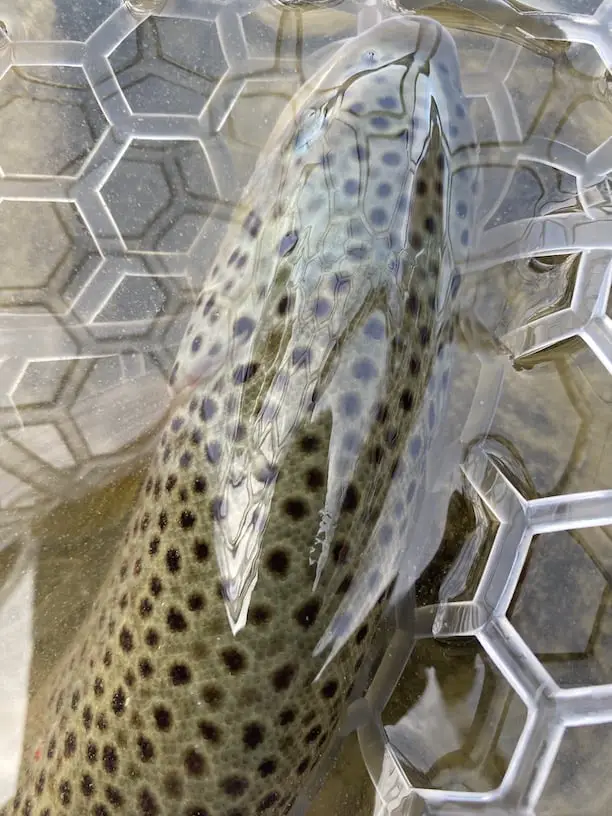
A drift boat can usually carry the guide and two anglers. The price you’re quoted for a boat is almost always the same for 1 or 2 anglers. In other words, if it’s just you, the price may be $500. If you want to add another angler, there is no additional cost. The fee is the same whether you go by yourself or with someone else.
In some cases you can add a third angler for a fee, but this can quickly turn into a chaotic mess. I don’t recommend it.
A “half day” of fly fishing will usually fall into the range of $400 to $575, and this usually includes equipment (rods, reels, etc), but it doesn’t necessarily include lunch and flies.
A “full day” of fly fishing will usually fall into the range of $500 to $675, and this usually includes equipment (rods, reels, etc), but it doesn’t necessarily include lunch and flies.
When you’re booking, the fly shop often makes the price difference between a half and full day so negligible that it’s a no-brainer to book a full day. This is of course by design.
One of my favorite fly shops charges $575 for a half-day guided trip, and $675 for a full day guided trip. You’d have to have more money than sense to book a half-day.
How Much to Tip Your Fishing Guide
Keep this simple. There’s no need to overcomplicate things.
20% is a very reasonable amount to tip your fly fishing guide if you’re pleased with the effort put forth. If you’re feeling generous, great, go higher.
It’s all about the effort your guide puts into your trip. How well did they plan? Did they take your wishes into consideration? Did you learn anything? Were they on time? Did they stay late?
A tip isn’t based upon how many fish you catch.
But know this.
If you get a guide who’s rude or condescending, the kind of guide who ruins the outing, it’s absolutely agreed upon that zero tip is warranted. Zero. I’ve heard this belief echoed by very well-known fly fisherman in the industry, and I’ve heard it echoed by guides.
When I was around 12 or so, my father hired a guide for a half-day of conventional fishing while we were on a family vacation in Florida.
I was beyond excited.
Unfortunately, the guide ended up being a curmudgeon of a man who was irritable and rude the entire duration of the trip.
When we hooked into something really big—a fish he believed was a jewfish—he said in an annoyed tone, “Ah, you’ll never land that fish, just cut the line.” It was one of many snarky comments.
To this day, I don’t remember any of the fish we landed, or if we even landed any—I just remember how utterly uncomfortable the guide made us feel—like we were inconveniencing him.
I’ll take solace in the hope that he didn’t get much of a tip from my dad.
If I found myself in that same situation today, I’d have a conversation with the guide early in the outing. If things didn’t improve drastically, I’d leave no tip whatsoever. Zero. I’d also let him know exactly why he wasn’t getting tipped. Maybe it’d make a difference for the next person.
Hiring Saltwater Fly Fishing Guides
I wanted to mention a couple things about fishing with a hired guide in saltwater. Don’t make the mistake of thinking you’ll step out of the river and into the salt without missing a beat. It’s different.
There are two points I’d like to hammer home. You can thank me later.
Firstly, practice your casting in the weeks leading up to your trip to the salt. Your casts need to be longer.
You’ll also likely be confronted by wind, which makes casting tougher. So, practice when it’s windy.
You’ll need a bigger stick to cast into the wind—a 9-foot 9-weight is a perfect all-around saltwater fly rod. The guide will likely have one for you, but I always bring my own.
Secondly, there’s something that drives saltwater guides nuts. It’s called a “trout-set.” This is when you set the hook by quickly lifting your rod up. You know, a standard hook set.
In saltwater, fly anglers should always do a strip-set, not a trout-set. I can tell you from experience that it’s tough to ignore the decades-long instinct to rip that rod back when you feel weight on your line. Resist the temptation.
Your guide will bite his or her tongue, and calmly remind you try to do a strip-set instead.
Speaking of casting in the salt with a guide, check out my article about fly fishing for redfish.
Summary
Here’s a question for you.
If you were going to go hunting in a state you weren’t familiar with, would you hire a guide or show up on public land hoping your research produced results?
I’m not being facetious—it’s an honest question.
If you’re the type who likes to figure things out on his or her own, and doesn’t mind getting skunked occasionally, then maybe you don’t want a guide.
But if you want to hit the ground running, hire a fly fishing guide.
Guides have years (sometimes decades) of experience that they’ll leverage to help you get into fish. Think about that. It’s like fishing with a local who spends 4-8 hours on the water each day. A guide will maximize your productivity.
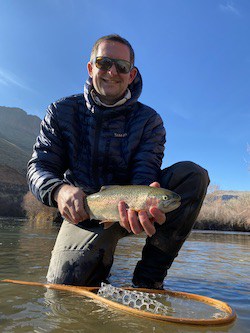
About the Author
My name's Sam and I'm a fly fishing enthusiast just like you. I get out onto the water 80+ times each year, whether it's blazing hot or snow is falling. I enjoy chasing everything from brown trout to snook, and exploring new waters is something I savor. My goal is to discover something new each time I hit the water. Along those lines, I record everything I learn in my fly fishing journal so I can share it with you.
Follow me on Instagram , YouTube, and Facebook to see pictures and videos of my catches and other fishing adventures!
